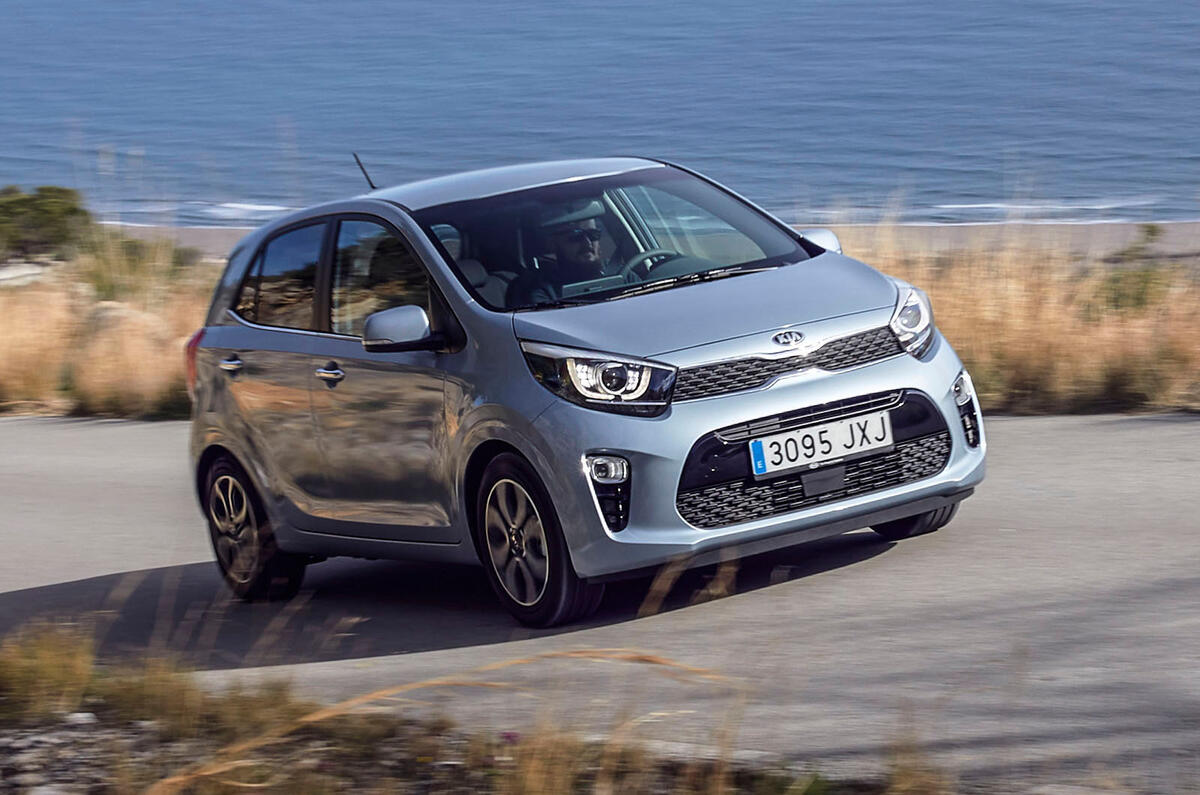Third-generation city car sets a high bar on refinement, packaging and out-of-town dynamism, but avoid the entry-level engine
What is it?
The new Kia Picanto – a car that, in a world in which the Renault Twingo has become a platform-twinned Smart car and the Ford Ka no longer exists as once we knew it, looks like something of a grandee among city cars.
Now entering its third full model generation, this Korean-built supermini came along in 2004 and helped to set the template for the modern European micro-hatchback years before Europe’s own car-makers – Peugeot, Citroën, Volkswagen, Seat, Skoda and Vauxhall – could get in on the act themselves with their various, often inter-related alternatives.
Now that European buyers have so many locally built options to choose from, of course, the Picanto is in danger of fading into the background - unless it can hit those pioneering high notes all over again. Besides the rivals already mentioned, it now has full-size budget superminis such as the Dacia Sandero, MG 3 and Ford Ka+ to contend with. Success in such a crowded niche will take a lot more than it once did.
This new version starts in the right place, though, with a lighter, stiffer body structure. It then adds a longer wheelbase, suspension and steering systems that have been respecified as well as retuned, more assertive and eye-catching body styling, improved cabin and boot space, a more upmarket-looking dashboard and a revised engine range featuring, on its uppermost tier, a new, 99bhp turbocharged petrol motor that promises to do transformative things for the car’s driving experience.
What's it like?
The Picanto’s top-of-the-range engine will join the line-up later this year. In the meantime, earlier cars will come with the same choice of 1.0-litre three-cylinder or 1.2-litre four-cylinder atmospheric petrol engines. The entry-level 66bhp 1.0-litre unit was the one we picked to introduce ourselves to the new car.
Kia claims to have turned the Picanto into one of the most mature and refined prospects in the class, and there’s certainly plenty of evidence of where the time and effort has been. The last-generation example could be quite a noisy car to drive, particularly in three-cylinder form, but the new one is much more civilised. The three-pot motor starts relatively smoothly and works away in reasonably muted tones, until occasion calls for you to rouse it beyond 4000rpm and under plenty of throttle – at which point it displays just enough triple charm to respond warmly to. Wind and road noise are now both fairly well suppressed.
Kia’s redesign of the car’s body-in-white has added stiffness while also taking out 21kg of weight. It’s a worthwhile saving, but it doesn’t feel like much when the engine is labouring up inclines having fallen off-cam in its higher gears. Working through a nicely slick, light clutch and gearchange, the 1.0-litre motor is potent enough around town and on level A-roads but still can feel out of its depth on motorways and hills, although that's a criticism you could level at plenty of cars of this size.
The Picanto’s ride and handling feel quite markedly altered. Gone are the old dismayingly slow, overly light steering rack and soft-riding, corner-teetering handling gait. The new Picanto is a car that can ride a little abruptly at low speeds but which definitely takes out-of-town motoring much more easily in its tersely checked and level stride. High-speed stability is greatly improved, handling response is good and outright grip levels (on the 15in wheels and tyres of our test car) are high enough to withstand a gently enthusiastic driving style.
The Picanto’s interior offers improvements on passenger head and leg room of up to about 25mm, keeping it competitive with the class’s late-comers. On outright boot space it now tops the city car ranks, offering proper 60/40 split folding back seats (where plenty of rivals make do with 50/50) and an adjustable boot floor.
Material quality levels around the interior have jumped up a notch, too: the Picanto’s column stalks, ventilation controls and steering column adjustment latch all feel particularly robust. High-spec cars will come with a 7.0in floating infotainment touchscreen compatible with Apple CarPlay and Android Auto, as well as heated front seats and steering wheel, but it remains to be seen how far down the model range those richer equipment features will filter.
Should I buy one?
UK pricing on the Picanto remains to be finalised, but Kia’s market research confirms how highly its customers continue to be motivated by value for money – so we can expect an attractive offering.
With the right price, this car is now just a better engine away from being a strong alternative to the segment’s very latest and greatest European options. We’d avoid the entry-level motor unless your usage is going to be confined to town and city roads, but there should be plenty to recommend the more powerful versions.
Kia Picanto 2 1.0 MPI
Location Sitges, Spain; On sale May; Price £11,000 (ext) Engine 3 cyls, 998cc, petrol; Power 66bhp at 5500rpm; Torque 71lb ft at 3500rpm; Gearbox 5-spd manual; Kerb weight 953kg; 0-62mph 14.3sec; Top speed 100mph; Economy 67.3mpg (combined); CO2/tax band 97g/km, 18% Rivals: Volkswagen Up 1.0 60PS Take Up, Toyota Aygo 1.0 VVT-i x-play

Comments
Post a Comment